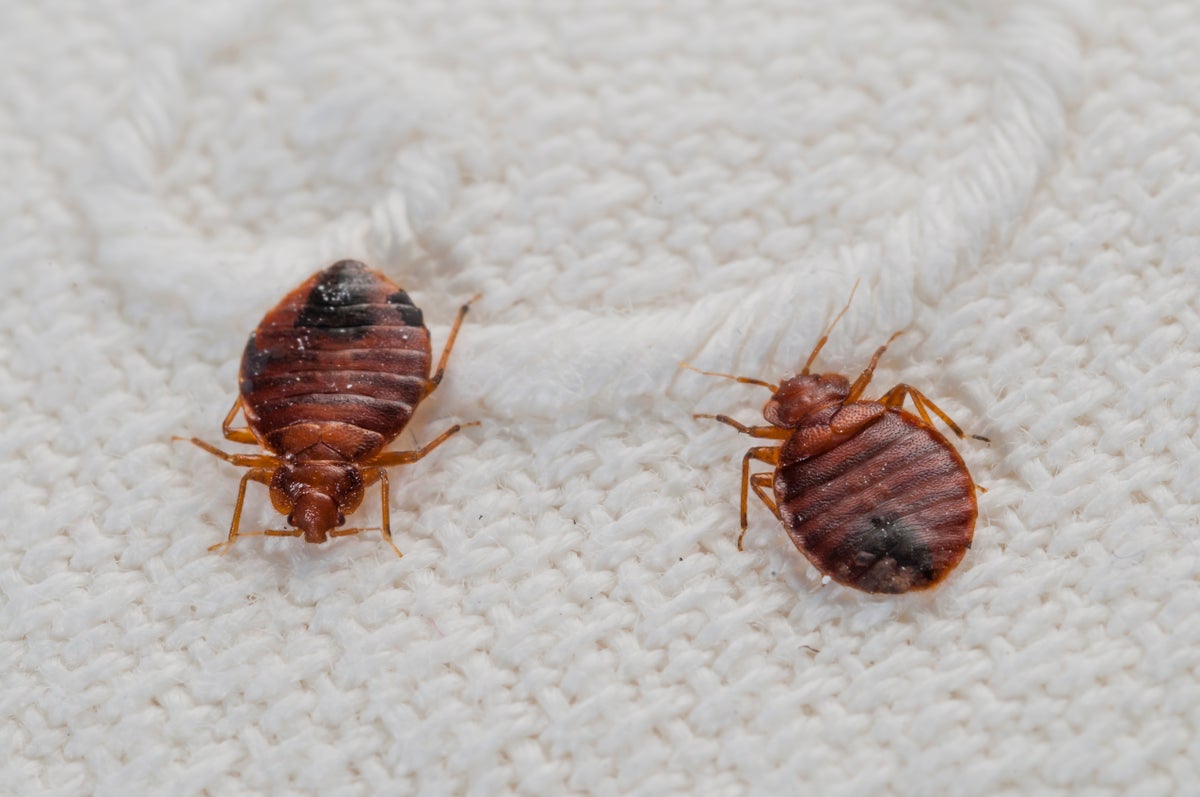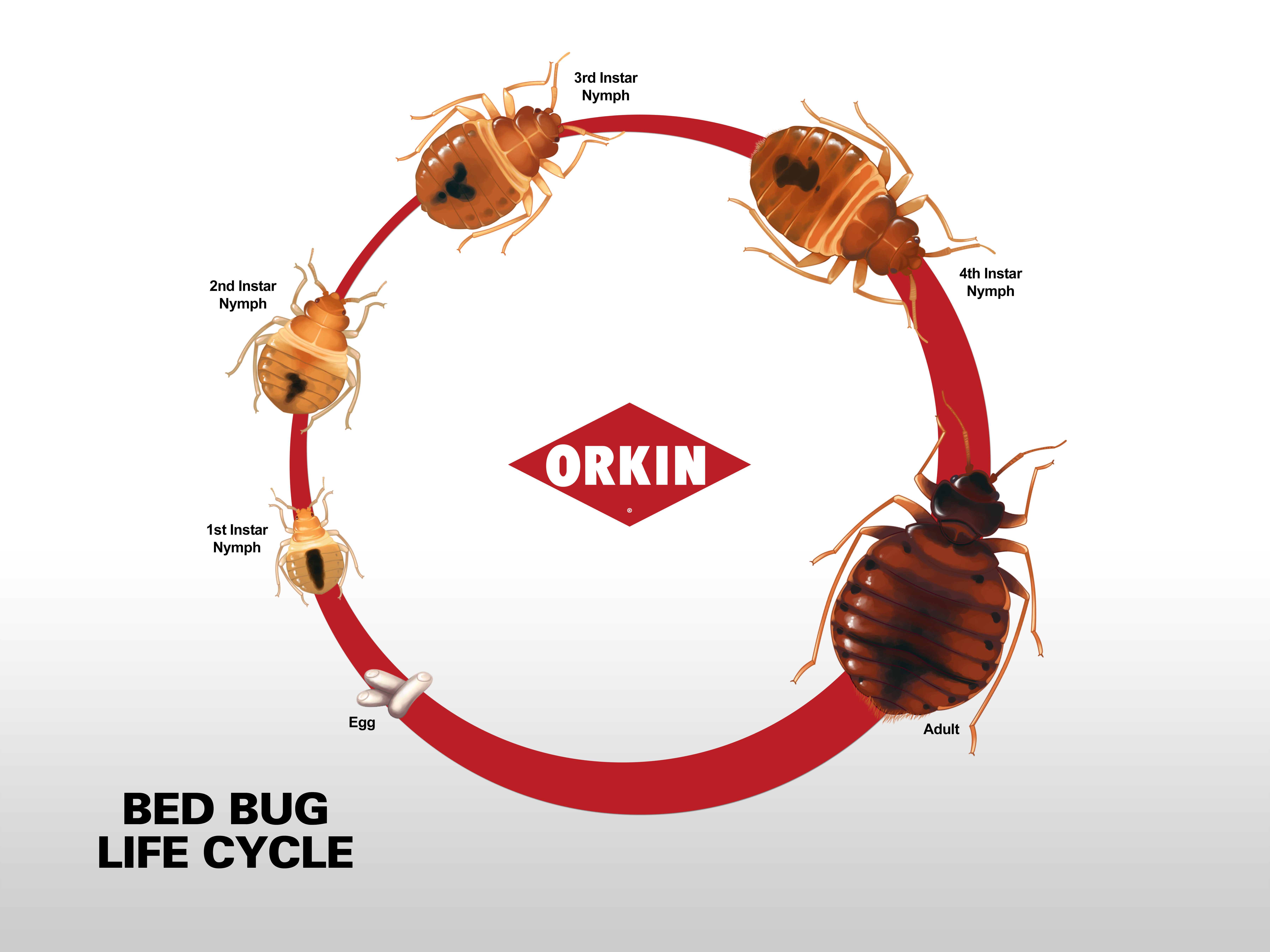Bed bugs can spread quickly, typically within a few days to a few weeks after infestation starts. They reproduce rapidly and travel easily on clothing or belongings.
The speed at which bed bugs spread depends on various factors such as the size of the infestation, frequency of travel, and availability of hiding spots. Understanding these factors is crucial in effectively managing and preventing the spread of bed bugs in homes or public spaces.
Taking prompt action upon suspicion of bed bug presence is essential to prevent further infestations and ensure a quick resolution to the problem. Early detection and immediate treatment are key in controlling the spread of these pests.

Credit: www.scientificamerican.com
Lifecycle Of Bed Bugs
Egg Stage
Bed bugs start as small, white eggs. Females lay around 200 eggs in their lifetime.
Nymph Stage
Nymphs hatch from eggs and resemble smaller versions of adult bed bugs. They go through five molting stages to grow.
Adult Stage
After the final molt, nymphs become adults. They feed on blood and can live for several months without a meal.

Credit: www.terminix.com
Factors Influencing Spread Time
Understanding the factors that influence the spread time of bed bugs is essential in managing and preventing infestations. Several key factors come into play when it comes to how quickly bed bugs can spread. These factors include environmental conditions and access to hosts.
Environmental Conditions
The right environmental conditions play a crucial role in determining how quickly bed bugs can spread. Bed bugs thrive in warm and humid environments, with temperatures between 70°F and 80°F being ideal for their survival and reproduction. These pests can survive in cooler temperatures too, but their development and reproduction significantly slow down. Therefore, warmer climates or environments with consistent temperatures can accelerate their spread.
Moreover, bed bugs can survive for longer periods without feeding in cool conditions, remaining dormant until favorable conditions arise. This dormancy enables them to wait for a new host to come along and continue their infestation. It’s important to note that bed bugs are resilient and can tolerate a wide range of environmental conditions, allowing them to survive in various climates and locations.
Access To Hosts
Access to hosts plays a vital role in determining how quickly bed bugs can spread from one area to another. Bed bugs rely on the blood of hosts, usually humans, to survive and reproduce. They are excellent hitchhikers and can easily latch onto clothing, luggage, or other personal items to access new hosts. This ability to hitch a ride with unsuspecting individuals allows bed bugs to spread rapidly, especially in environments with high human traffic.
Additionally, bed bugs can move between adjacent rooms, apartments, or buildings through shared infrastructure. Cracks in walls, electrical outlets, and pipes provide them with hidden pathways to move freely. This ability to migrate and find new hosts quickly increases the likelihood of infestation spread.
To summarize, understanding the factors that influence the spread time of bed bugs is essential in effectively managing and preventing infestations. Environmental conditions, such as temperature and humidity, directly impact their survival and reproduction rates. Access to hosts also plays a crucial role in their ability to spread, as bed bugs can hitch a ride on humans or migrate through shared infrastructure. By considering these factors, individuals can take proactive measures to mitigate bed bug spread and minimize the risk of infestations.Detection Of Bed Bugs
Bed bugs can be a nuisance, and it’s crucial to detect their presence early to prevent a widespread infestation. Detection of bed bugs is a vital step in controlling and eliminating them. By understanding the signs of infestation and employing effective monitoring techniques, you can detect bed bugs before they become a major problem.
Signs Of Infestation
Recognizing the signs of a bed bug infestation is essential in preventing their spread. Look out for small reddish-brown bugs or their shed skins in your bedding, mattress seams, and furniture. Bloodstains on sheets and pajamas and dark spots of fecal matter are also indicative of a bed bug infestation. Distinct bite marks on your skin, often in a line or cluster, are clear indicators of bed bug presence.
Monitoring Techniques
Implementing effective monitoring techniques is crucial for detecting bed bugs early. Use interceptor traps under furniture legs to catch bed bugs as they attempt to climb up. Regularly inspecting your mattress and furniture for any signs of infestation is also important. Vacuuming your living areas and encasing your mattress in a bed bug-proof cover can aid in early detection and prevent their spread.
Speed Of Infestation
When it comes to bed bugs, the speed of infestation can vary depending on several factors.
Rate Of Reproduction
Bed bugs are known for their rapid reproduction rates, with a single female capable of laying hundreds of eggs in her lifetime.
Infestation Severity
The severity of a bed bug infestation can escalate quickly, especially in environments with high human traffic or shared living spaces.
Spread Patterns
Bed bugs can spread from one place to another within days, hitchhiking on items or people. In ideal conditions, these pests can rapidly infest new areas, making prompt action crucial to prevent widespread infestations. Regular monitoring and early intervention help control their spread.
Spread PatternsWhen it comes to bed bug infestations, understanding the spread patterns is crucial to effectively dealing with the problem. Bed bugs can spread rapidly, and knowing how they move and multiply is essential for eliminating them from your home or property. In this section, we’ll explore two specific spread patterns: localized spread and wide infestation. Let’s delve into each pattern to gain a better understanding.Localized Spread
Bed bugs tend to spread within a localized area before moving further afield. Initially, they may infest one room or specific areas, such as a mattress or upholstered furniture. From there, they can quickly spread to nearby rooms or adjacent areas where they can find additional sources of food, namely humans. This localized spread is often facilitated by the movement of infested items, such as luggage, clothing, or used furniture. Bed bugs can crawl onto these items and unknowingly hitch a ride to a new location, where they then establish a new infestation. It’s important to note that bed bugs do not fly or jump, but they are skilled at maneuvering and hiding in small, dark spaces, making their spread difficult to detect and control.Wide Infestation
If left unchecked, bed bugs can quickly transition from a localized spread to a wide infestation. As they reproduce, these resilient pests can multiply rapidly, infesting multiple rooms or even entire buildings. Wide infestation occurs when bed bugs have sufficient access to feeding sources and favorable environmental conditions, such as warmth, darkness, and clutter. A wide infestation can be particularly challenging to eradicate, as the pests can move freely between multiple locations within the infested area. Moreover, if a building has multiple apartments or units, bed bugs can easily travel through shared spaces like walls, ceilings, and even electrical outlets. This can cause a more widespread problem that requires professional intervention to eliminate the infestation entirely.In conclusion, understanding spread patterns is crucial when dealing with bed bug infestations. Localized spread occurs initially, as bed bugs move within a confined area, while a wide infestation can quickly develop if not addressed promptly. Being aware of these patterns can help homeowners and property managers take appropriate measures to control and eliminate bed bug infestations effectively. Remember, quick action is key when it comes to combating these persistent pests.Prevention And Control
When dealing with bed bug infestations, early intervention and professional extermination are crucial steps in preventing their spread.
Early Intervention
- Regularly inspect your bedding and furniture.
- Immediately address any signs of bed bugs.
- Isolate infested items to contain the spread.
- Vacuum and clean your living spaces regularly.
Professional Extermination
Seek professional pest control services for effective eradication of bed bugs.
Consult with experts for safe and thorough extermination methods.
“`By taking proactive steps such as early intervention and enlisting professional help, preventing the spread of bed bugs can be effectively managed.
Credit: www.orkin.com
Frequently Asked Questions On How Long It Takes For Bed Bugs To Spread?
How Do Bed Bugs Spread From One Place To Another?
Bed bugs can spread through infested items like furniture, clothing, and luggage. They hitchhike on these items and move from one location to another. They can also spread through cracks and crevices, quickly infesting new areas.
What Is The Average Time For Bed Bugs To Spread In A New Location?
Bed bugs can spread to a new location within a few days if they find favorable conditions. They can rapidly multiply, leading to a widespread infestation. Immediate action is crucial to prevent further spreading and address the issue effectively.
Can Bed Bugs Spread When Someone Moves To A New House Or Apartment?
Yes, bed bugs can spread when people move to a new house or apartment. If the new place is already infested, bed bugs can easily hitchhike on belongings and spread to the new environment. It’s important to take preventive measures to avoid this scenario.
Conclusion
Considering the rapid spread rate of bed bugs, it is crucial to take immediate action if you suspect an infestation. These tiny pests can travel from room to room, infesting multiple areas within your home or even neighboring properties. Act swiftly to prevent a widespread infestation by seeking professional help and implementing effective prevention measures.
Remember, the longer you delay, the more difficult and expensive it becomes to eliminate these resilient insects. Safeguard your living space and maintain a pest-free environment.
Related posts:

I’m MD Tanvir, and I bring years of expertise gained from working closely with pest control companies to the forefront. My journey in the industry has inspired me to launch Bug Battler, a platform aimed at equipping people with the know-how to combat pests autonomously. Through Bug Battler, I aim to empower individuals with practical insights to tackle pest infestations effectively.

